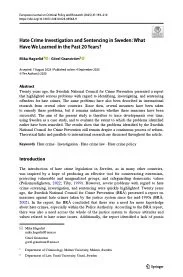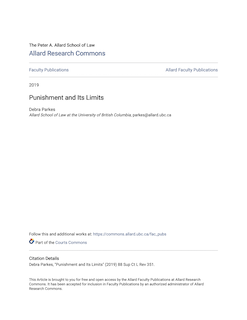By Mika Hagerlid, Görel Granström
Twenty years ago, the Swedish National Council for Crime Prevention presented a report that highlighted serious problems with regard to identifying, investigating, and sentencing ofenders for hate crimes. The same problems have also been described in international research from several other countries. Since then, several measures have been taken to remedy these problems, but it remains unknown whether these measures have been successful. The aim of the present study is therefore to trace developments over time, using Sweden as a case study, and to evaluate the extent to which the problems identifed earlier have been remedied. The results show that the problems identifed by the Swedish National Council for Crime Prevention still remain despite a continuous process of reform. Theoretical links and parallels to international research are discussed throughout the article.
European Journal on Criminal Policy and Research (2025) 31:193–210




















